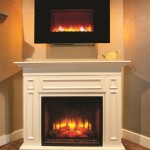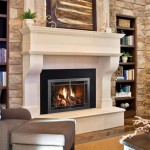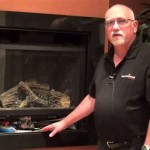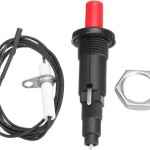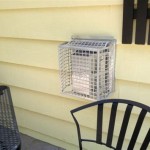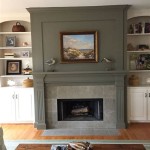Small Portable Fireplaces: Warmth and Ambiance On the Go
Small portable fireplaces are gaining popularity as a convenient and versatile option for adding warmth and ambiance to various settings. Unlike traditional fireplaces, these compact units offer the flexibility to be easily moved and used in different locations, both indoors and outdoors. This article will explore the characteristics, benefits, and considerations associated with small portable fireplaces.
These devices function as localized heat sources and decorative elements. They are designed to be self-contained and require minimal installation, often operating on readily available fuel sources. The aesthetic appeal of a flickering flame, coupled with the practicality of providing supplemental heat, contributes to their growing appeal among homeowners, renters, and outdoor enthusiasts.
Fuel Options and Considerations
One of the primary distinctions between various models of small portable fireplaces lies in their fuel source. Common fuel options include gel fuel, ethanol, propane, and electricity. Each fuel type presents unique advantages and disadvantages concerning heat output, cost, environmental impact, and safety considerations.
Gel fuel fireplaces are often favored for their ease of use and clean burning characteristics. The gel fuel canisters are simply placed within the fireplace unit and ignited. These fuels typically produce a visible flame and minimal smoke or odors. However, gel fuel generally provides lower heat output compared to other fuel sources and may require frequent refilling, impacting the overall cost of operation. The canisters also require careful handling to prevent spills or leaks.
Ethanol fireplaces utilize denatured alcohol as fuel. Ethanol burns cleanly, producing a relatively odorless and smokeless flame. These fireplaces are often considered more environmentally friendly than some alternatives, as ethanol is a renewable fuel source. The heat output from ethanol fireplaces is generally higher than that of gel fuel, but it may still be insufficient for heating large spaces. Refilling an ethanol fireplace requires caution to avoid spills and potential fire hazards. It is important to ensure adequate ventilation when using ethanol fireplaces indoors.
Propane fireplaces, while less common in the "small portable" category, offer a higher heat output and longer burn time compared to gel fuel and ethanol. Propane fueled models often require a connection to a propane tank, which may limit their portability to some extent. Safety precautions are paramount when using propane fireplaces, including proper ventilation and leak detection measures. The storage and handling of propane tanks also require adherence to specific guidelines.
Electric fireplaces, technically not "fireplaces" in the traditional sense, simulate a flame effect using LED lights and other technologies. They offer the advantage of being vent-free and require no fuel storage. Electric fireplaces provide adjustable heat settings and can be used for ambiance without producing heat. While they do not provide the authentic warmth of a real flame, they are a safe and convenient option for supplemental heating and decorative purposes. The heat output is typically dependent on the wattage of the unit and may be limited.
Safety Features and Precautions
Safety is a critical consideration when operating any type of fireplace, including small portable models. It is imperative to follow the manufacturer's instructions and adhere to safety guidelines to prevent accidents and injuries. All fireplaces should be placed on a stable and non-flammable surface, away from combustible materials such as curtains, furniture, and paper products.
Fireplaces that utilize liquid fuels, such as gel fuel and ethanol, should be refilled only when the unit is cool and the flame is completely extinguished. Spills should be cleaned up immediately with absorbent materials. It is essential to use only the recommended fuel type and avoid overfilling the fuel reservoir. Never leave a burning fireplace unattended, and keep children and pets away from the unit.
Proper ventilation is crucial when using fireplaces that burn fuels. While some models are designed for indoor use, it is important to ensure adequate airflow to prevent the buildup of carbon monoxide, a colorless and odorless gas that can be lethal. Carbon monoxide detectors should be installed in homes where fireplaces are used.
Electric fireplaces also require careful attention to safety. Ensure that the unit is properly grounded and connected to a functioning electrical outlet. Avoid overloading the circuit and do not use extension cords unless absolutely necessary. Inspect the power cord regularly for damage and replace it if necessary. Do not place flammable materials on or near the electric fireplace.
Applications and Benefits of Portability
The portability of these fireplaces makes them suitable for a variety of applications. Homeowners can use them to add warmth and ambiance to living rooms, bedrooms, and patios. Renters can enjoy the benefits of a fireplace without the need for permanent installation. Small portable fireplaces are also popular for outdoor events, such as camping trips, picnics, and tailgating parties.
Beyond the practical aspect of providing supplemental heat, these fireplaces offer aesthetic benefits. The flickering flame creates a relaxing and inviting atmosphere, making them a popular choice for creating a cozy ambiance in any space. The visual appeal can enhance the overall decor of a room or outdoor setting.
The ease of use and minimal maintenance requirements are additional advantages of small portable fireplaces. Most models require minimal assembly and can be operated with simple controls. Cleaning typically involves wiping down the exterior surfaces and occasionally refilling the fuel reservoir. The lack of chimney or venting systems eliminates the need for professional cleaning and maintenance.
The energy efficiency of small portable fireplaces can vary depending on the fuel source and the specific model. Electric fireplaces generally offer better energy efficiency compared to fuel-burning models, as they convert electricity directly into heat. Fuel-burning fireplaces can be efficient in providing localized heat, but they also release exhaust gases into the surrounding environment.

10 Portable Fireplaces For Petite Places Fireplace Indoor Design

Mini Fireplace Peppermill Home

Small Portable Fireplaces Yes They Re Real

14 Inch 1400w Freestanding Fireplace Portable Electric Heater Stove Vintage 3d Realistic Flame For Indoor Use Home Decor Room Com

1400w Electric Fireplace Heater 14 Freestanding Stove Portable Space With Fake Flame Overheat Protection For Indoor Use Small Com

Mini Electric Fireplace Table Portable Heater With Flame Effect For Household Living Room Bedroom Small Desktop Fan Fruugo Tr

Zimtown Small Electric Fireplace Infrared Heater Freestanding Stove Com

12 Cozy Portable Fireplace Ideas For The Modern Home Decoist

Seizeen Electric Heaters For Inside 13 H Small Space Heater Portable 1500w 750w Fireplace With Virtual Flame Shutoff Safety Protection Com

12 Cozy Portable Fireplace Ideas For The Modern Home Decoist

